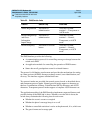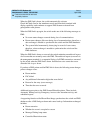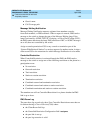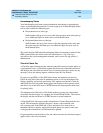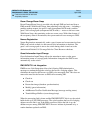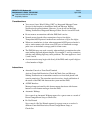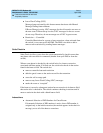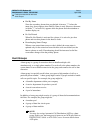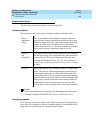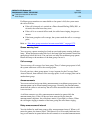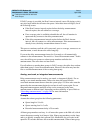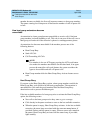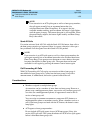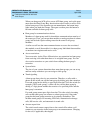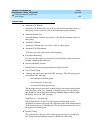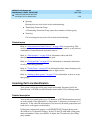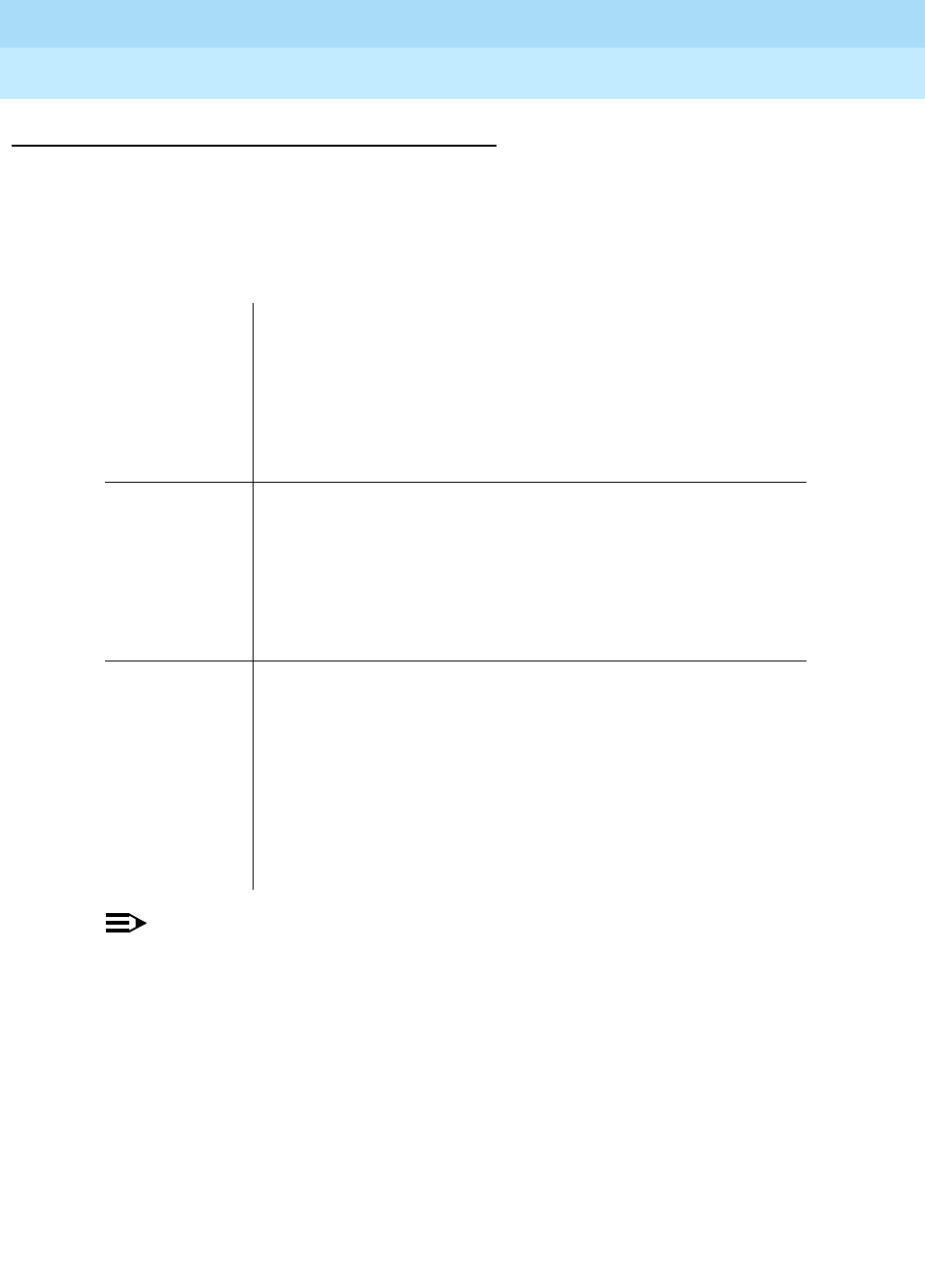
DEFINITY ECS Release 8.2
Administrator’s Guide
555-233-506
Issue 1
April 2000
Features and technical reference
1369Hunt Groups
20
Detailed description
The following sections describe how a hunt group works.
Hunting methods
The system uses one of two types of hunting method to distribute calls:
NOTE:
Expert Agent Selection uses uniform call distribution and expert agent
distribution. Refer to DEFINITY ECS Guide to ACD Call Centers.
Hunt group queues
You can set up a queue for a hunt group. When all extensions in the group are
busy, calls wait in queue for the next available extension. You determine how
many calls can wait in queue by setting the queue length.
Direct
department
calling
The system hunts for an available extension in the hunt
group, always starting with the first extension in the group.
If the first extension is busy, the system checks the second
extension. If the second extension is busy, the system
checks the third, and so on. When an extension is available,
the system rings that extension to connect the call.
Uniform
call
distribution
The system hunts for the extension that has been available
for the longest time. The system then rings that extension to
connect the call. This type of hunting provides the most
equitable distribution of calls. Also, this type of hunting is
required for a modem pool, data-line circuit ports, and data
modules.
Circular Enter
circ when the call should be routed in a “round-robin”
order. The order in which the participating extensions are
administered is the order in which calls are directed. The
switch keeps track of the last extension in the hunt group to
which a call was connected. The next call terminating on the
hunt group is offered to the next station in the circular list
independent of how long that station has been idle. The
switch does not start searching at the same place each time.



